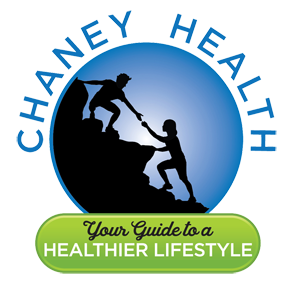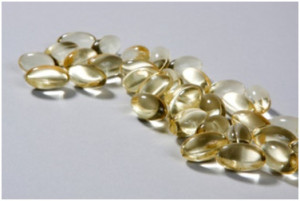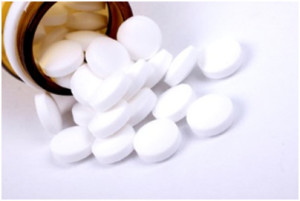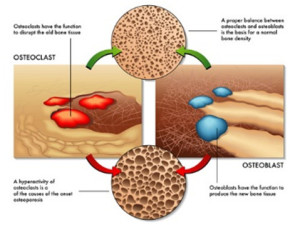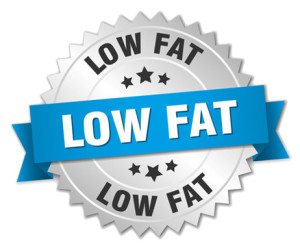What Role Do B Vitamins Play in a Heart Healthy Lifestyle?
Author: Dr. Stephen Chaney
 Two weeks ago I shared some studies that challenge the claim that vitamin E doesn’t reduce heart attack risk. To close out “Heart Health” month, I want to share some information that may change how you think about B vitamins and heart disease risk. Once again, you’ve seen the headlines: “B Vitamins Do Not Reduce the Risk of Heart Disease”. In fact, these headlines have been repeated so many times that virtually every expert thinks that it has to be true. Once again, I’m going to share some information with you that I learned from a seminar by Dr. Jeffrey Blumberg who disagrees with this commonly held belief.
Two weeks ago I shared some studies that challenge the claim that vitamin E doesn’t reduce heart attack risk. To close out “Heart Health” month, I want to share some information that may change how you think about B vitamins and heart disease risk. Once again, you’ve seen the headlines: “B Vitamins Do Not Reduce the Risk of Heart Disease”. In fact, these headlines have been repeated so many times that virtually every expert thinks that it has to be true. Once again, I’m going to share some information with you that I learned from a seminar by Dr. Jeffrey Blumberg who disagrees with this commonly held belief.
Dr. Blumberg is a Professor in the Friedman School ofNutrition Science and Policy at Tufts. Dr. Blumberg has over 200 publications in peer-reviewed scientific journals. He is considered one of the world’s top experts on supplementation, and his specialty is conducting and analyzing clinical studies. He believes that the media has seriously misinterpreted the studies on B vitamins and heart disease risk. You might call this “The Rest of the Story” because you (and your doctor) definitely did not hear this part of the story in the news.
Do B Vitamins Reduce Heart Disease Risk?
 The study in question is called the “Heart Outcomes Prevention Evaluation-2“. In that study a group of middle aged men and women received 2.5 mg of folate, 50 mg of vitamin B6 and 1 mg of vitamin B12 versus a placebo and were followed for an average of 5 years.
The study in question is called the “Heart Outcomes Prevention Evaluation-2“. In that study a group of middle aged men and women received 2.5 mg of folate, 50 mg of vitamin B6 and 1 mg of vitamin B12 versus a placebo and were followed for an average of 5 years.
The headlines that you may have seen said “B vitamins do not reduce the risk of major cardiovascular events in patients with vascular disease”. But, the headlines did not tell the whole story.
In the first place, that was only true for heart attacks and cardiovascular death. Strokes were reduced by 25%. I don’t know about you, but I consider strokes to be fairly major.
However, even when we focus on heart attacks and cardiovascular deaths the headlines didn’t tell the whole story. You see, even the best intentioned studies sometimes contain fatal flaws that aren’t obvious until after the study has been completed.
The Flaws In The Study
 There were two major flaws in this study.
There were two major flaws in this study.
Flaw #1 was that 70% of the study subjects were eating foods fortified with folate and had adequate levels of that nutrient in their bloodstream before the study started.
For those people who were already getting enough folate in their diet, B vitamin supplementation didn’t make much of a difference. However, for those people not getting adequate levels of folate in their diet, B vitamin supplementation decreased their risk of heart disease by ~15%.
Flaw #2 was that ~90% of the people in the study had a history of coronary artery disease and most of them were already on cholesterol lowering medications.
To understand why this is a problem you have to understand both the proposed mechanism by which B vitamin supplementation has been proposed to lower the risk of heart disease AND how the cholesterol lowering drugs work.
Deficiencies of folate, B6 and B12 are thought to increase the risk of heart disease because the B vitamin deficiency causes an increase in homocysteinelevels in the blood, and high homocysteine levels are thought to increase inflammation – which is a risk factor for heart disease. So supplementation with folate, B6 and B12 has been proposed to decrease heart disease risk by decreasing inflammation.
The problem is that the most commonly used cholesterol lowering medications also decrease inflammation.So you might not be surprised to learn that those people who had a history of coronary artery disease(and were taking cholesterol lowering medication that reduces inflammation) did not receive much additional benefit from B vitamin supplementation.
For those people in the study who were not taking cholesterol lowering medication, B vitamin supplementation also reduced their risk of heart attacks by ~15% – but there were too few people in that group for the results to be statistically significant.
So the headlines from this study really should have said “B vitamins do not reduce the risk of heart attacks or cardiovascular deaths in people who are already getting adequate folate from their diet or in people who are taking drugs that reduce the bad effects of B vitamin deficiency”. But that kind of headline just wouldn’t sell any newspapers.
What Does This Study Mean For You?
There are two very important take-home lessons from this study.
Lesson #1: Once again this study makes the point that supplementation makes the biggest difference when people have an increased need. The studies discussed in Vitamin E and Heart Disease two weeks ago illustrated increased need because of age, pre-existing disease, and genetic predisposition. This study illustrated increased need because of inadequate diet.
Lesson #2: This study also illustrates a problem that is becoming increasingly common in studies of supplementation. It is considered unethical to not provide participants in both groups with what is considered the standard of care for medical practice. In today’s world the standard of care includes multiple drugs with multiple side effects, and some of those drugs may have the same mechanism of action as the supplement.
I have discussed this problem in the context of omega-3 fatty acids and heart disease in a previous “Health Tips From the Professor,” Is Fish Oil Really Snake Oil? In many cases it is no longer possible to ask whether supplement X reduces the risk of a particular disease. It is now only possible to ask whether supplement X provides any additional benefit for patients who are taking multiple drugs, with multiple side effects. That’s not the question that many of my readers are interested in.
The Bottom Line
- Headlines have proclaimed for years the “B Vitamins Do Not Reduce Heart Disease Risk”. Dr. Jeffrey Bloomberg of Tufts University has reviewed one of the major studies behind this claim and found the headlines to be misleading.
- For example, the study showed that B vitamin supplementation reduced strokes by 25%, which is a pretty significant finding in itself.
- When he analyzed the portion of the study looking at heart attacks, he found two major flaws:
#1: 70% of the people in the study were already getting adequate amounts of B vitamins from their diet and would not be expected to benefit from supplementation. For the 30% who weren’t getting adequate amounts of B vitamins from their diet, supplementation reduced their risk of heart attack by 15%.
#2: 90% of the people in the study were taking a drug that masks the beneficial effects of B vitamin supplementation. For the 10% who weren’t taking the drug, supplementation with B vitamins also reduced their risk of heart attack by 15%, but there were too few people in that group for the results to be statistically significant.
Obviously, there were only a handful of people in the study who weren’t getting enough B vitamins from their diet AND weren’t on medication, so we have no idea what the effect of B vitamin supplementation was in that group.
- Once again this study makes the point that supplementation makes the biggest difference when people have an increased need. The studies discussed in “Health Tips From the Professor” two weeks ago illustrated increased need because of age, pre-existing disease, and genetic predisposition. This study illustrated increased need because of inadequate diet.
- This study also illustrates a problem that is becoming increasingly common in studies of supplementation. It is considered unethical to not provide participants in both groups with what is considered the standard of care for medical practice. In today’s world the standard of care includes multiple drugs, some of which may have the same mechanism of action as the supplement.
In many cases it is no longer possible to ask whether supplement X reduces the risk of a particular disease. It is now only possible to ask whether supplement X provides any additional benefit for patients who are taking multiple drugs, with multiple side effects. That’s not the question that many of my readers are interested in.
These statements have not been evaluated by the Food and Drug Administration. This information is not intended to diagnose, treat, cure or prevent any disease.
